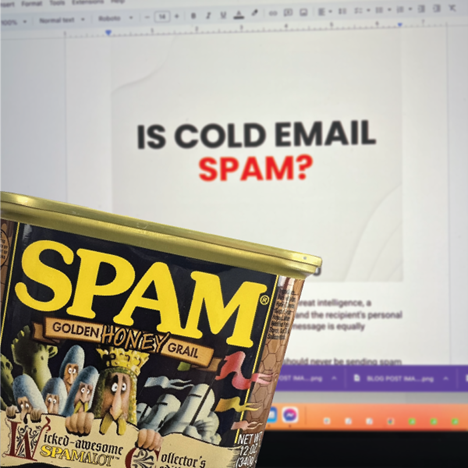Is Cold Email Spam?
Unsolicited emails, cold emails, and spam are a hot topic for the Only Influencers crowd as well as email professionals.
There is a great deal of uncertainty regarding what constitutes spam, cold email, and illegal email.
Many people mistakenly believe that all unsolicited or cold emails are spam, and that spam is unlawful.
However, it is crucial to distinguish between these terms to understand their legal implications.
Firstly, it is worth noting that if all cold emails were against the law, then thousands of businesses around the world would not be conducting successful email marketing campaigns.
The term "spam" is not a legal term, and its definition varies. A message may be spam without being illegal, and an illegal message may not be considered spam under certain definitions.
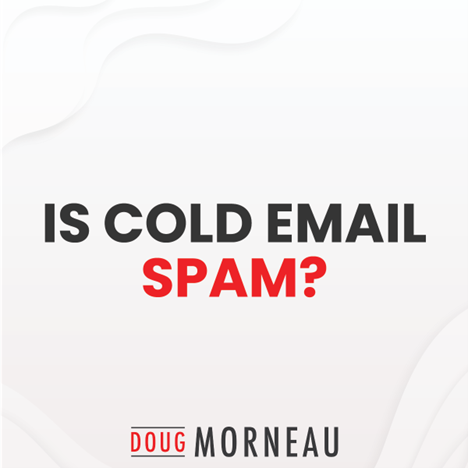
According to Spamhaus, a supplier of real-time threat intelligence, a message is considered spam if it is unsolicited, and the recipient's personal identity and context are irrelevant because the message is equally applicable to many other potential recipients.
This definition clarifies that email marketers should never be sending spam if they are doing their job correctly. A good sales and marketing team will target specific individuals for specific reasons and deliver tailored messages.
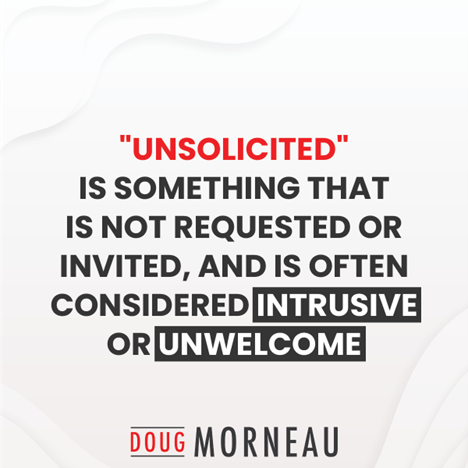
For some context let’s look at the term Unsolicited.
The best description for the word "unsolicited" is something that is not requested or invited, and is often considered intrusive or unwelcome. It refers to something that is given or done without prior agreement, approval, or consent.
For example, an unsolicited email or phone call is one that is received without the recipient having asked for it or given permission for it to be sent. Similarly, an unsolicited gift or offer is one that is given without the recipient having expressed interest or need for it.
The term "unsolicited" is often used in the context of marketing or sales, where unsolicited communication or offers can be perceived as spam or intrusive.
The average American is exposed to 4,000-10,000 ads per day.
Overall, this explosion of advertisements can be attributed to the internet, as social media and other online websites typically have a heavy ad presence.
Would you agree or disagree that those 4,000-10,000 ads per day are unsolicited?

In many cases the recipients of those ads are paying for subscriptions to the various sources of those advertisements.
My MacBook, my internet service, smart TV, cable subscription, my email service provider ….
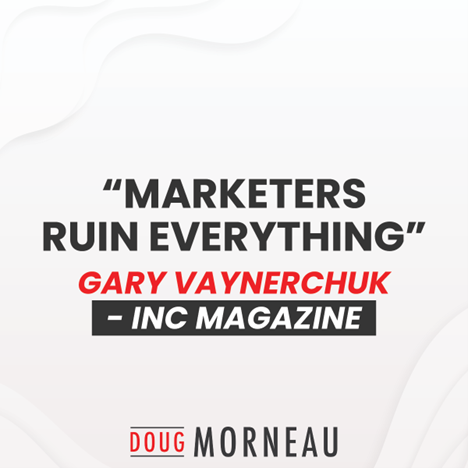
Let's be clear, working as a Fractional CMO, I’m not opposed to advertising. In fact, I’ve purchased over one hundred million dollars of advertising, most within the email channel.
In an interview with - Gary Vaynerchuk in Inc Magazine in 2017, Gary said “Marketers Ruin Everything.”
I disagree and I’d say “Lazy Marketers Ruin Everything.”
There are bad actors everywhere in the world, not just email marketing.
According to economist Milton Friedman, the main purpose of a business is to maximize profits for its owners, and in the case of a publicly traded company, the stockholders are its owners.
“If we have a product or service that can help someone, we have an obligation to show them”.
The only question becomes, how do we begin this dialogue?
Now, let’s get back to today's topic, Cold Email.
Certainly! Cold emails and spam are two types of unsolicited emails that are often confused with each other, but they have some distinct differences.
A cold email is an email that is sent to a person or business that you have had no prior contact with, with the purpose of establishing a relationship, starting a conversation, or promoting a product or service. The key difference between a cold email and spam is that a cold email is personalized and targeted towards a specific recipient, with the goal of providing them with some value or benefit.
On the other hand, spam is unsolicited email that is sent indiscriminately to a large number of recipients, often with the intent of advertising or promoting a product or service. Spam emails are usually sent without any regard for the recipient's interests or needs, and are often repetitive, irrelevant, and annoying.
In short, the key difference between a cold email and spam is that a cold email is targeted, personalized, and provides value to the recipient, while spam is indiscriminate, irrelevant, and annoying.
Email is one of the most widely used forms of communication today, with billions of emails being sent and received every day. While email can be a powerful tool for businesses and individuals to connect with others, it can also be a source of frustration when used improperly. One of the most contentious issues surrounding email is the distinction between cold email and spam. While these two terms are often used interchangeably, they are not the same thing, and it's important to understand the difference between them.
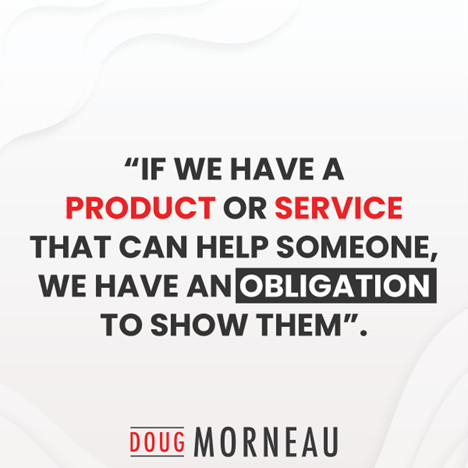
What is Cold Email?
Cold email refers to the practice of sending an unsolicited email to a person or business that you have had no prior contact with. The goal of a cold email is typically to establish a relationship, start a conversation, or promote a product or service. Cold emails can be an effective way to connect with potential customers or partners, but they must be approached carefully to avoid being perceived as spam.
The key difference between a cold email and spam is that a cold email is personalized and targeted towards a specific recipient, with the goal of providing them with some value or benefit. Cold emails should be well-researched, informative, and engaging, with a clear call-to-action that encourages the recipient to respond or take some kind of action.
For example, if you were a freelance writer trying to land new clients, you might send a cold email to the editor of a publication that you admire. In this email, you would introduce yourself, provide some information about your writing experience and areas of expertise, and offer to write a sample article for them. This type of cold email is targeted and personalized and provides value to the recipient by demonstrating your skills and offering a potential solution to their content needs.
What is Spam?
Spam refers to unsolicited email that is sent indiscriminately to a large number of recipients, often with the intent of advertising or promoting a product or service. Spam emails are usually sent without any regard for the recipient's interests or needs, and are often repetitive, irrelevant, and annoying.
Spam emails can take many forms, including phishing scams, pyramid schemes, and fake job offers. In many cases, spam emails are also used to spread malware or other malicious software that can compromise the security of a recipient's computer or personal information.
Spam emails can be difficult to identify, as they often use deceptive tactics such as misleading subject lines, fake sender information, and promises of easy money or other rewards. However, there are several warning signs that can help you identify spam emails, including:
- The email is sent from a suspicious or unknown sender
- The subject line is vague, sensational, or too good to be true
- The email contains poor grammar or spelling errors
- The email asks for personal information or money
- The email contains links or attachments that you weren't expecting

Differences Between Cold Email and Spam:
While cold email and spam may seem similar at first glance, there are several key differences between them. These include:
Personalization: Cold emails are personalized and targeted towards a specific recipient, while spam emails are sent indiscriminately to a large number of people.
Intent: The intent of a cold email is to establish a relationship, start a conversation, or provide value to the recipient, while the intent of spam is to advertise or promote a product or service without regard for the recipient's interests or needs.
Quality: Cold emails are typically well-researched, informative, and engaging, while spam emails are often repetitive, irrelevant, and annoying.
Legal Compliance: Cold emails are legal as long as they comply with anti-spam laws and regulations, while spam emails are illegal in many cases and can result in severe penalties.
Tips for Writing Effective Cold Emails:
Here are some tips for writing effective cold emails:
Personalize Your Email:
One of the most important things you can do when writing a cold email is to personalize it to the recipient. This means taking the time to research the person or company you're emailing and tailoring your message to their interests or needs. Use their name in the greeting, reference a recent article or project they worked on, and explain why you think you can help them. By personalizing your email, you'll show that you've done your homework and are genuinely interested in building a relationship with the recipient.
Keep it Short and Sweet:
When writing a cold email, it's important to keep your message brief and to the point. Most people receive dozens if not hundreds of emails each day, so they're unlikely to read a long, rambling message. Stick to one or two paragraphs and focus on the most important information. If you want to provide more details, include a link to your website or portfolio where the recipient can learn more.
Provide Value:
The most effective cold emails provide value to the recipient. This means offering a solution to a problem they're facing or sharing information that they'll find useful. For example, if you're emailing a potential client, you might offer to send them a free report on a topic related to their industry. This demonstrates your expertise and shows that you're interested in helping them, rather than just selling them something.
Use a Clear Call-to-Action:
Every cold email should include a clear call-to-action (CTA) that tells the recipient what you want them to do next. This might be scheduling a call, requesting a meeting, or visiting your website. Be specific and make it easy for the recipient to take action. For example, instead of saying "let me know if you're interested," suggest a specific date and time for a call or meeting.
Be Professional:
Even though you're sending a cold email, it's important to be professional and respectful. Use proper grammar and spelling, avoid slang or casual language, and make sure your email is formatted correctly. Use a professional email address and include your full name and contact information in the signature. Remember that the way you present yourself in your email reflects on your brand and your credibility.
Follow Up:
If you don't receive a response to your initial email, don't give up. Following up is an important part of the cold email process, and it can often take several emails to get a response. Wait a few days or a week and send a polite follow-up email, reminding the recipient of your previous email and asking if they have any questions or if there's anything else you can provide.
Respect the Recipient's Time:
Finally, it's important to respect the recipient's time when sending a cold email. Don't send multiple emails or follow-ups in a short period of time, and don't expect an immediate response. Remember that the recipient is likely busy and has many other emails to respond to. Be patient and polite, and if you don't receive a response, move on to the next opportunity.
Conclusion:
Cold emails can be an effective way to connect with potential customers, partners, or employers. By personalizing your message, providing value, and using a clear call-to-action, you can increase your chances of getting a response. Remember to be professional, respectful, and patient, and don't be afraid to follow up if you don't receive a response. With these tips in mind, you can write effective cold emails that help you achieve your business or career goals.
I am a Marketer, so, please note that the information provided is for general informational purposes only and should not be construed as legal advice. If you require legal advice, please consult with a licensed attorney in your jurisdiction.

 How to resolve AdBlock issue?
How to resolve AdBlock issue? 